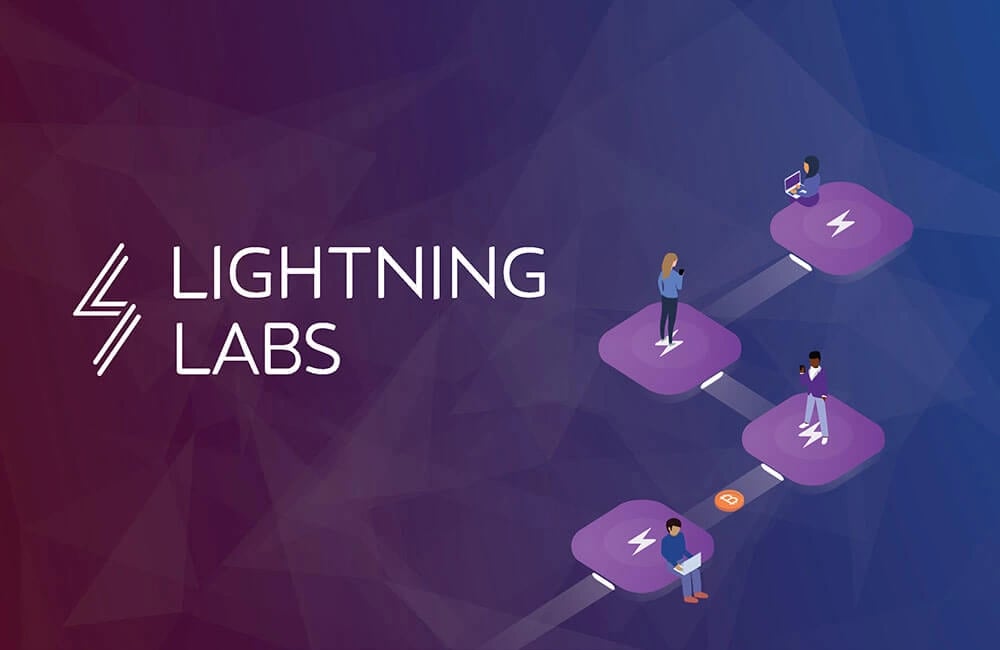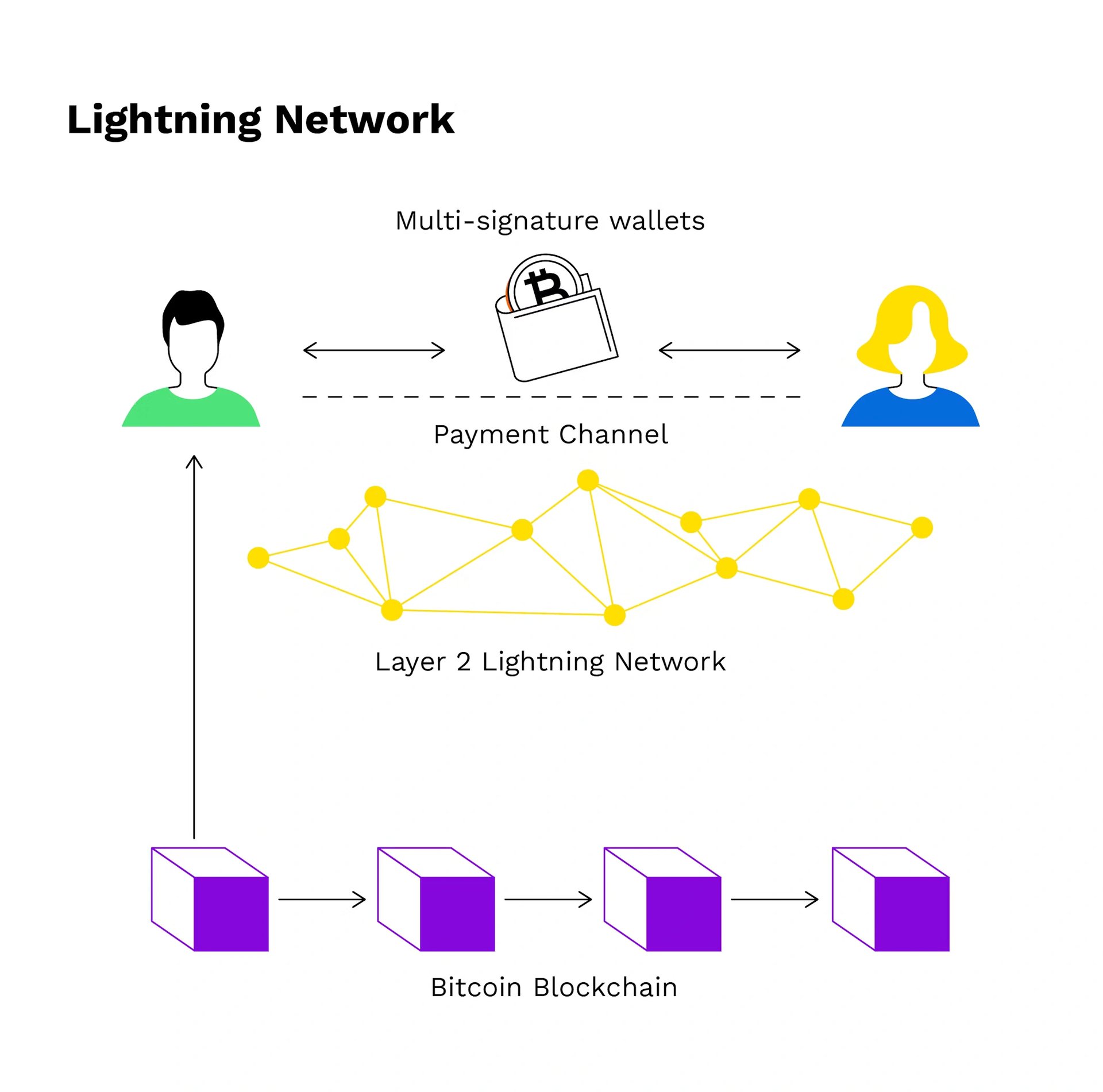订阅 wiki
Share wiki
Bookmark
Lightning Network
Lightning Network
闪电网络是一种Layer 2解决方案,旨在通过允许链下支付通道,在比特币区块链上实现更快、更便宜的交易。这个去中心化网络促进即时小额支付,并增强比特币的可扩展性,使其更适合日常使用。 [1][2]
概述
闪电网络是一种点对点支付系统,通过连接区块链上的支付通道,实现快速、低成本的比特币交易。这些通道相互连接,允许在网络上进行支付,而无需参与者之间的信任。交易需要从发送者的节点到接收者的路由,由于对每个节点的流动性可用性的可见性有限,可能需要多次尝试。支付是原子性的,使用哈希时间锁定合约(HTLC)来确保完成或失败,即使节点变得无响应。路由节点通过战略性地管理流动性来支持可靠的交易,从而赚取费用。[2][3]
Lightning Labs

功能特性
Lightning Loop
Lightning Loop使用户能够通过促进与链上比特币地址之间的交易来管理闪电通道流动性。Loop Out允许将闪电交易发送到链上地址,从而创建入站容量,而Loop In将链上比特币发送到闪电通道中,从而增加出站流动性。Loop使用无需信任的潜艇互换(submarine swaps)进行非托管操作,从而实现安全、独立的交易。Loop Out交易被批量处理以最大限度地减少费用。Loop服务的身份验证使用L402,将Macaroons与闪电支付验证相结合,以确保访问安全。 [4]
闪电网络池
闪电网络池是一个非托管的拍卖平台,用于租赁闪电网络通道流动性(LCL)。参与者可以买卖流动性,将其作为有到期日的时间绑定资产,并通过比特币合约进行保护。这些租赁使参与者能够获得流入或流出的流动性并赚取利息。它们通过比特币合约强制执行,确保做市商的资金在到期前被锁定。 [3]
已清算的订单在批量链上交易中处理,为参与者创造了除路由费用之外的稳定收入来源。开放式拍卖形式让市场发出流动性最需要的信号,减少闲置通道并优化流动性分配。Pool通过允许新手以所需百分比获得流入资金来支持他们,并根据流动性需求进行市场驱动的定价。 [3]
支付通道
闪电网络由支付通道组成,每个通道代表两个对等方之间的 2-of-2 多重签名合约,他们可以在其中进行重复的 比特币 交易。承诺交易记录通道中的每次交易更新,任何一方都可以使用最新的交易单方面关闭通道,在链上收回资金而无需另一方的同意——这一过程称为强制关闭。该协议使用惩罚系统来防止违规行为(发布过时的承诺交易以获得更高的余额),如果违规方恶意行事,其资金将受到惩罚。[5][6]
独立的网络节点 Watchtower 通过监视 比特币 区块链 上的特定交易 ID 来帮助监视违规行为。虽然它们监视违规行为,但 Watchtower 无法查看承诺详细信息,从而维护用户隐私。检测到违规行为后,Watchtower 可以解密并发布撤销交易以强制执行惩罚,从而阻止攻击者访问资金并没收其通道余额作为惩罚。 [5][6]

流言网络
闪电网络使用一种流言网络,节点通过该网络共享关于自身的信息,包括公共通道、路由费用和网络访问详情。每个节点基于这些共享数据构建网络图,以确定交易路线,尽管一些路由节点可能绕过此要求。流言网络通常因节点频繁更新费用而繁忙,但对于网络图缺乏严格的共识,因为节点可能会移除不活跃的对等节点或错过某些更新。通过图数据,节点可以分析网络指标,包括总节点数、通道数以及每个节点的中心性——衡量路线经过的频率。然而,中心性并不一定表明最佳路由费用。为了防止垃圾信息,节点仅转发来自至少有一个公共通道的节点的流言消息,确保参与者拥有比特币股份和交易费用。 [7]
路径查找
在闪电网络中,付款人选择其付款的路由,目标是直接且低成本的路径,但通常需要尝试具有不同费用的多条路由。节点可以使用各种策略来优化路径查找;有些可能会外包此过程。每条路由都经过洋葱加密,因此只有发送者知道完整路径,中间节点仅看到前一个和下一个通道,而接收者仅知道最终跳,而没有看到付款的来源。 [8]
闪电协议 (L402)
L402,之前称为LSAT,是一种协议,它将闪电支付与基于Macaroon的身份验证相结合,以实现去中心化网络中安全高效的付费API访问。Aperture实现了该协议,作为gRPC和REST的反向HTTP代理运行,使付费API能够分离支付、权限和请求处理。闪电Loop和Pool,用于非托管交换和通道流动性的服务,目前使用Aperture来处理这些过程。L402,一种闪电API密钥,将Macaroons与支付哈希相结合,以促进分布式系统中的身份验证和验证,而无需中央用户数据库。为了使L402有效,需要包含支付哈希的Macaroon和通过支付闪电发票获得的preimage。这允许计量式的机器对机器API访问,而无需传统的登录方法,从而能够验证API请求的支付和权限。 [9][10]
Macaroons
Macaroons是为分布式系统中的安全认证而设计的持有者令牌。它们包含权限,并且仅使用根密钥即可验证,无需中央数据库查找,从而增强了系统的弹性和效率。与cookie不同,Macarons可以被限制和安全地委派,允许用户控制权限。但是,它们难以撤销,需要删除根密钥,这会使所有相关令牌失效。 [11]
Taproot 资产
Taproot 资产是一种利用 比特币 Taproot 升级的协议,允许在 比特币 区块链 上发行资产,这些资产可以通过闪电网络进行快速、大容量和低成本的交易。通过利用 Taproot 的高级树结构和 Schnorr 签名,Taproot 资产增强了隐私和可扩展性,支持多跳交易并与更广泛的闪电网络集成。验证成本是分散的,参与者将资产数据存储在链下的本地 "Universes" 存储库中,并通过追溯交易历史(从其起源开始)来验证资产,并通过专用的 gossip 层进行验证。 [12][13]
边缘节点
边缘节点是专门支持 Taproot Assets 的闪电网络节点,促进 Taproot Assets 和 比特币 通道之间的交易。作为服务提供商,它们维护与客户之间的私有 Taproot Assets 通道,同时保持与公共闪电网络的连接。边缘节点通过支持资产到比特币的兑换,使 Taproot Assets 钱包能够与标准闪电网络服务无缝交互,从而允许支付任何闪电网络发票。客户还可以收到 Taproot 到比特币转换的实时报价,而边缘节点通过原子路由支付赚取费用。边缘节点可能会对冲头寸以减轻汇率波动,从而提供跨资产类型的稳定兑换。[14]
Lightning Terminal
Lightning Terminal是一个基于Web的仪表板,用于管理Lightning Labs产品,提供节点观察、通道管理和流动性解决方案的远程界面。它通过闪电节点连接(LNC)进行保护,确保端到端加密连接,所有节点数据对Lightning Labs保持私密。用户可以查看节点排名、中心性和性能统计数据,并利用Lightning Loop管理通道流动性,允许资金转移到链上或闪电通道中。通过Lightning Pool,用户可以买卖通道流动性,跟踪订单和监控通道。该终端还支持Taproot资产集成,从而可以通过闪电网络进行资产转移。该终端可以通过浏览器访问,而自托管设置(litd)缺少基于Web的推荐、支付功能和交易跟踪。[15]
闪电节点连接
闪电节点连接(LNC)实现与闪电节点的安全、端到端加密连接,即使节点位于Tor或NAT之后,从而简化远程节点管理。闪电终端使用此开源工具通过浏览器或应用程序将应用程序连接到节点。LNC依赖于LND的gRPC接口,节点与Web代理建立出站连接以供用户访问。密码认证密钥交换(PAKE)确保用户和节点之间的加密会话。[16]
LNC系统包括三个主要组件:[16]
- 闪电节点连接,在闪电终端守护进程(litd)上运行,方便请求、数据传输和用于身份验证的macaroon。
- 代理(TURN),支持NAT或防火墙后面的节点的网络遍历,创建同步通信通道。
- 应用程序,例如闪电终端,通过Web服务器访问,有可能在各种设备上独立使用。
LNC支持浏览器扩展、移动钱包和网络浏览器连接和管理节点、发送付款等。[16]
合作伙伴
- Binance
- Coinbase
- SimpleSwap
- Kraken
- Bitfinex
- Bithumb
- Bitstamp
- Kucoin
- OKEx
- OKCoin
- NiceHash
- CoinCorner
- BitMex
- Buda
- Strike
- Mt Pelerin
- Paxful
- BullBitcoin
- Bitaroo
- River Financial
- VBTC Vietnam
- FixedFloat
- LOFT
- PrimeBit
- SimpleFX
- BitcoinVN
- Bipa
- Boltz
- Kollider
- LN Markets
- Tauros
- Coinfinity
- Ripio
- StealthEX
- SecureShift
- Rhino Bitcoin
发现错误了吗?
